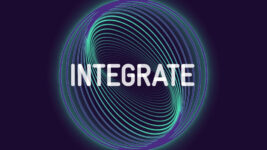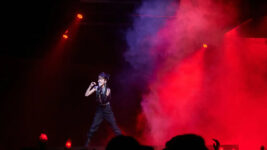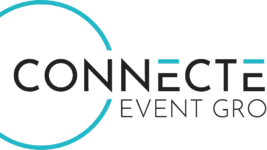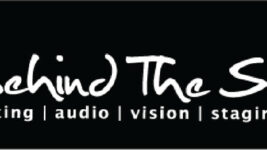News
8 Dec 2015
Review: Allen & Heath dLive
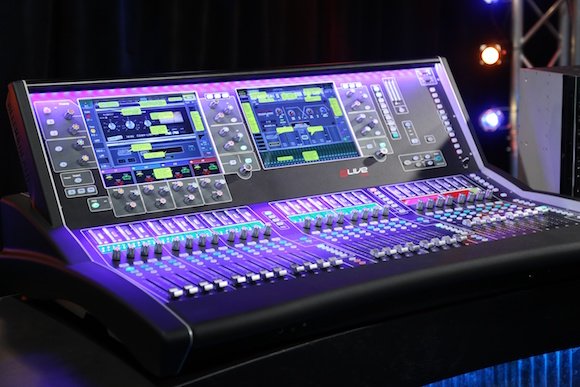
Subscribe to CX E-News
Lessons learnt

Allen & Heath has come a long way in the digital console market since the release of their first effort, the iLive.
I was initially skeptical about iLive because I thought it was over-priced and clunky – indeed the first generation console didn’t find widespread market acceptance here in Australia. But since then the company has revised the software several times and released new hardware options, and I’ve also done a lot of gigs on the platform. I’ve warmed to it over time and now I rather like it. Allen & Heath has also released a range of smaller format consoles such as the Qu series, which have been warmly received across the industry, and rightly so.
dLive is a nice summation of the lessons the company has already learnt about building digital desks, coupled with new design and features. Added to this it’s a hugely capable platform with a relatively small footprint. Like iLive, the dLive system is based upon a mix rack with control via a remote surface. Since the mixing takes place in the rack, it makes sense to start the review there.
Under the hood
Physically the DM rack looks quite a lot like its predecessors, if a little more expandable. Three choices of rack are available, the obvious difference being the number of analogue IO ports – 32×16, 48×24, or 64×32. Every rack features three 128 channel audio expansion card slots (called “ports”), as well as dual redundant hot-swappable power supply slots. Dual GigaACE ports provide redundant connectivity to the console, and four DX ports work in dual redundant pairs. An ME port allows connection to personal monitoring systems, and the rack also has WordClock in and out ports as well as dual Ethernet connections.
As far as I can tell from the specs, mix engine capability within the racks is identical, supporting 128 input channels and 64 mix outputs all with full processing. Of course with a maximum of 64 inputs included on the biggest rack, you might need some more IO to get to 128 inputs. Enter the DX32 expander – up to two of these can be connected to the mix rack (and another to the console) via the DX ports.
The DX32 is a four slot modular IO box, with card options including 8 analog input, 8 analog output, and stereo AES3 equivalents of both. Redundant power supply is optional. I measured latency from analog input to analog output at 0.7mS, which is basically negligible. The console runs natively at 96kHz. The system is pretty fast in general – I experimented with changing the bus structuring to see how long the recovery took – I was back up and running in about 10 seconds. I disconnected the mix rack from the surface and when plugged in again it re-acquired sync inside a second or two.
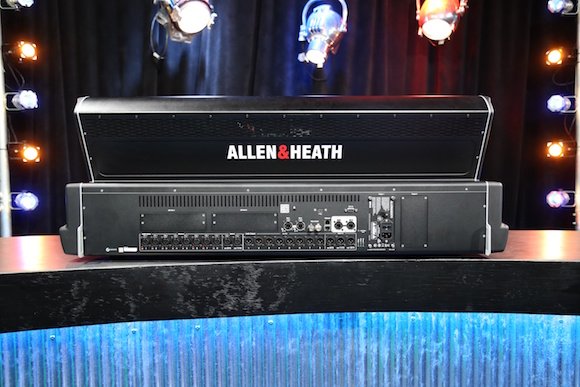
On the surface of things
Just like the mix rack, the dLive surface is available in three different sizes. The S3000 has a single touch screen and 20 faders. The S5000 and S7000 surfaces have two screens. The touch screens are multi-touch and gesture capable, so for instance you can zoom in and out of the patch window by making a pinching motion with a finger and thumb.
The left screen shows channel information while the right screen shows more generalized functions such as metering, patching, and console setup. I would love to be able to swap the screens, simply because I tend to look at the channel functions more frequently and the right side screen sits more comfortably in my eyeline. Adjacent each screen is a series of rotary encoders – the ones on the left adjust gain, and filter parameters. The six encoders at the right of each screen can be flipped between three function sets, each of these customized with send levels, or dynamics parameters.
In fact several parts of the console are customisable, not the least of these being 26 user function keys running the almost entire length of the right end of the surface. Screen displays can be customized too, with custom meter sets easy to build. The channel EQ display can be shown in the same format as the iLive does it, or as EQ curves overlaid on a grid. You can grab a point on the EQ and drag it up and down to side to side.
Channel dynamics are decent, with a couple of library presets bearing a striking resemblance to some real world processors you’ll know very well indeed. These can be used without chewing up any of the 16 effect slots. I like the on-board effects selection available on the dLive. Admittedly you’ll probably head for a reverb more frequently than the infra bass effect, but it’s nice to know it’s there if you want one.
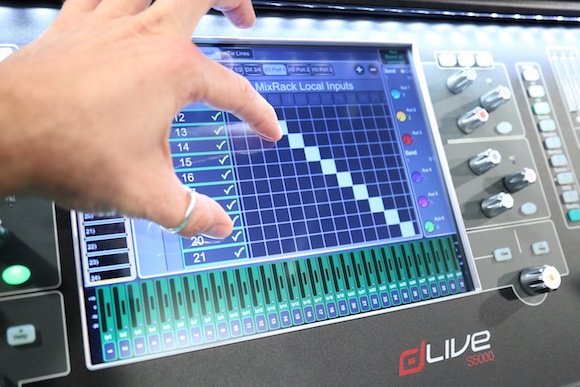
The encoders above each fader can be assigned to perform a range of functions including gain, pan and HPF, plus three user assignable functions. In addition to this, they can now be used as send levels too, so you can simultaneously be mixing to the main but on the faders and an auxiliary on the encoders.
A “listen” feature allows you to solo an individual section of a channel – whether it be a gate, compressor, or EQ. Hold the “listen” button and the screen lights up yellow with all the different things you can choose. A reset button allows you to instantly restore channel parameters to their default values in much the same way. A help function brings up bright yellow dialogs all over the screen explaining the function of each section. Fader banks can be selectively linked too – previously on the iLive fader linking was an all or nothing deal. It’s just one of many little but thoughtful interface refinements which make the console nicer to interact with.
The industrial design of the dLive surface is great. It’s a good looking console, and not near as busy as something like this could have become if it went wrong. I really like the customisable illumination of the surface, screens, LEDs, and top edge light strip which can be faded between white and blue. Fader layer changes are snappy, and the rotary encoders have an extremely “natural” feel to them. Lifting the surface is a two person task, but this is due mainly to bulk not weight, so it’s not a taxing job.
Even if the dLive was an utter pig of a thing to drive, you’d still have to admit it provides a lot of mix bus for not much money. But it’s not a pig, it’s a really good console to operate on. It’s the best of everything from A&H so far. I like how it feels, and moreover I like what it represents.
- Brand: Allen & Heath
- Model: dLive
- RRP: DM48 rack and S5000 surface as tested – AUD$39,200 inc GST.
- Product Info: www.allen-heath.co.uk
- Distributor: www.tag.com.au
First published in CX Magazine (December, 2015)
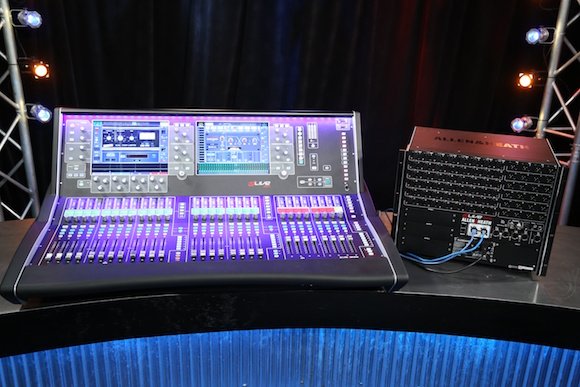
Subscribe
Published monthly since 1991, our famous AV industry magazine is free for download or pay for print. Subscribers also receive CX News, our free weekly email with the latest industry news and jobs.

